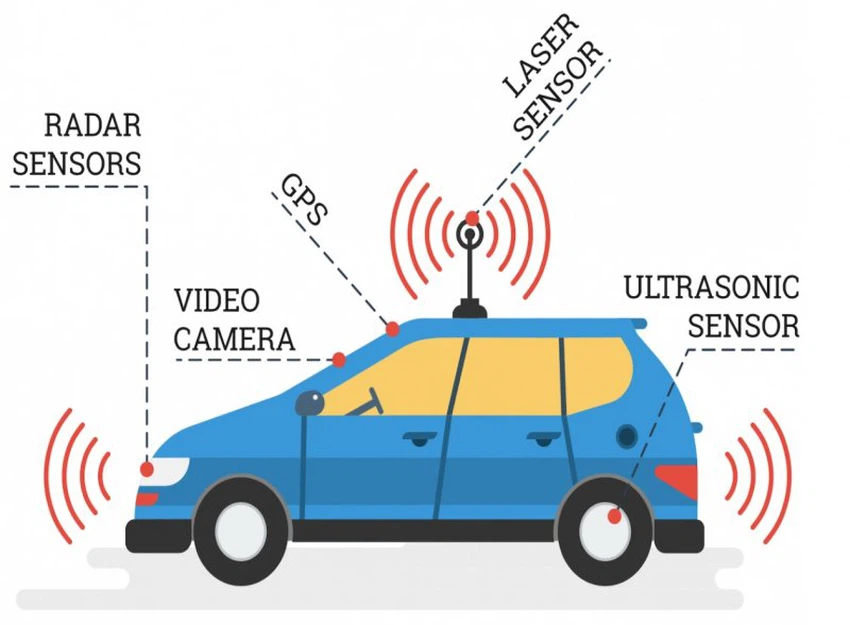New technology enables self-driving cars to see with greater accuracy in bad weather
ArabiaWeather - As with any new technology, self-driving cars have encountered navigation problems especially when navigating in bad weather, however, recent developments in self-driving car technology could have found the solution to this problem.
Like human drivers, autonomous vehicles can have difficulty navigating in some weather conditions such as rain and fog, and sensors in the car can be blocked by snow, snow or heavy rain, affecting their ability to read road signs and signs.

Where this car depends on radar for vision and navigation and on a technology called ( LiDAR ), as this technology works by bouncing laser beams off surrounding objects, and it can provide a high-resolution three-dimensional image when the weather is clear, but this technology may decrease in accuracy or fail to Foggy or dusty weather, or in rain and snow, when the laser beams bounce off fog, rain or snow particles, they do not give an accurate perception of the roads, which makes the driving process difficult and dangerous.

But thanks to a team of electrical engineers at the University of California San Diego, autonomous car technology comes close to navigating safely in all kinds of bad weather, the team has spent more than a year and a half developing a new way to improve the imaging capability of existing radar sensors so that it accurately predict shape and size. Things, the radar that works on radio waves, can see in all weather conditions, but it only captures a partial picture of the road scene, and from here was the team’s start to improve radar visibility.
The professor of electrical engineering and computer engineering at the University of California, San Diego noted that their method relies on using inexpensive radar in a manner similar to ( LiDAR ), except that it achieves a better view of self-driving cars even in bad weather, and their method also includes the possibility of combining radar and LiDAR technology . ), But the radars are still cheaper compared to the more expensive LiDAR systems.
This system consists of two radar sensors placed on the hood of the car, this dual system can see an area and more details than the individual radar sensor, the goal of the sensing process is not just to discover the presence of an oncoming car, but to know the speed at which that vehicle approaches, and what is its location And its dimensions (length, width, height).
A driving test was done using this system on clear days and nights, and compared to the ( LiDAR ) sensor in determining the dimensions of the cars that move in the road, and when the team added simulating foggy weather, the system’s performance did not change. Precisely at hidden vehicle dimensions, while the LiDAR sensor failed the test.
The problem with conventional radar is poor imaging quality, because when radio waves are sent and bounced off objects, only a small part of the signals are reflected back on the sensor, so vehicles, pedestrians and other things appear as a scattered set of points, but this team uses millimeter radar, It is a small version of the radar that gives more points to a specific object.
In addition, when a single radar sensor is used, it only receives a few points from its surroundings, so the accuracy of the sensor is weak, and there can be other cars in the periphery and not being seen, so the multi-radar system will improve the sensor by increasing the number of points that Reflected again, the team found that the two eyes are better than one eye, but the two radar sensors on the hood are spaced 1.5 meters apart.
However, the multiplicity of radars can create confusion in the sensor, it is common to see random points in the radar images that do not belong to real objects, as the sensor can capture the so-called echo signals, which are reflections of radio waves that are not directly from the objects that are discovered, and to solve these The problem is, the team has developed new algorithms that can merge information from two radar sensors together and produce a new noise-free image, and this is another innovation for the team to collect data from two radars in an overlapping field of view.
Arabia Weather App
Download the app to receive weather notifications and more..



